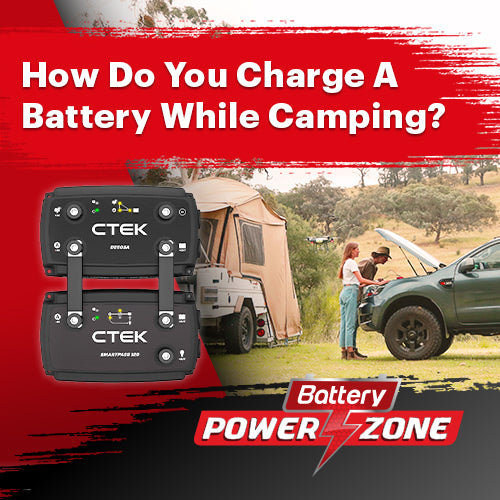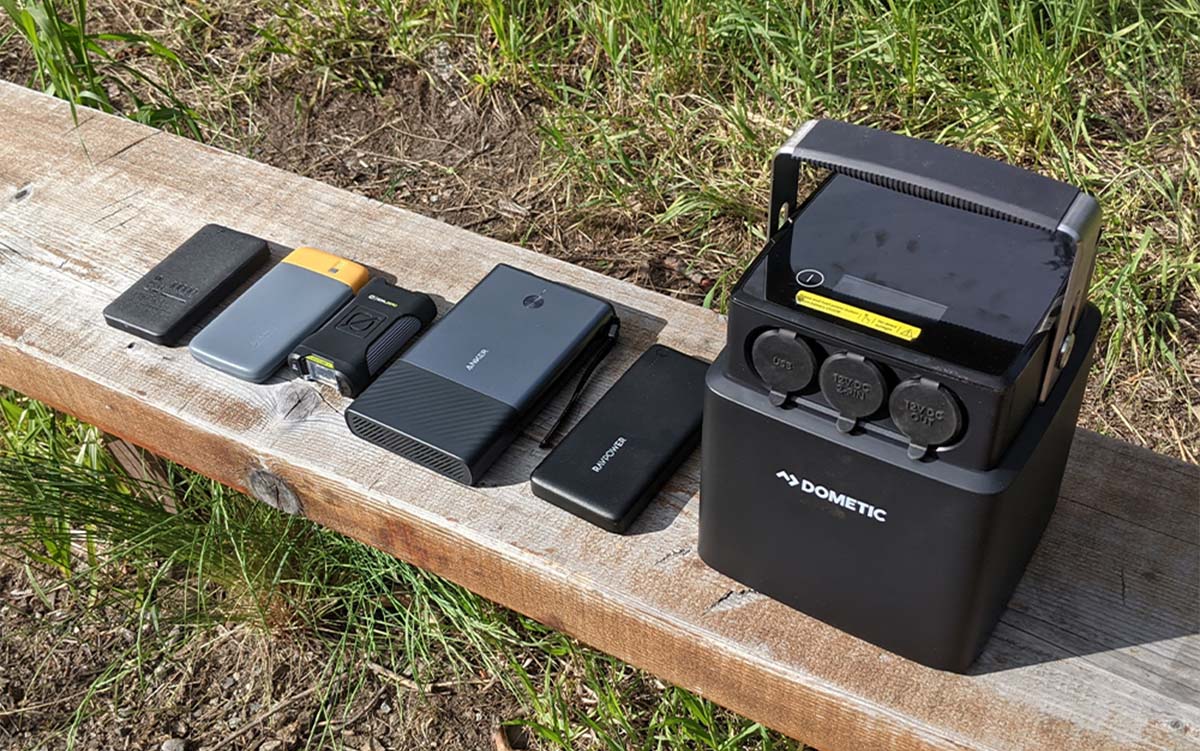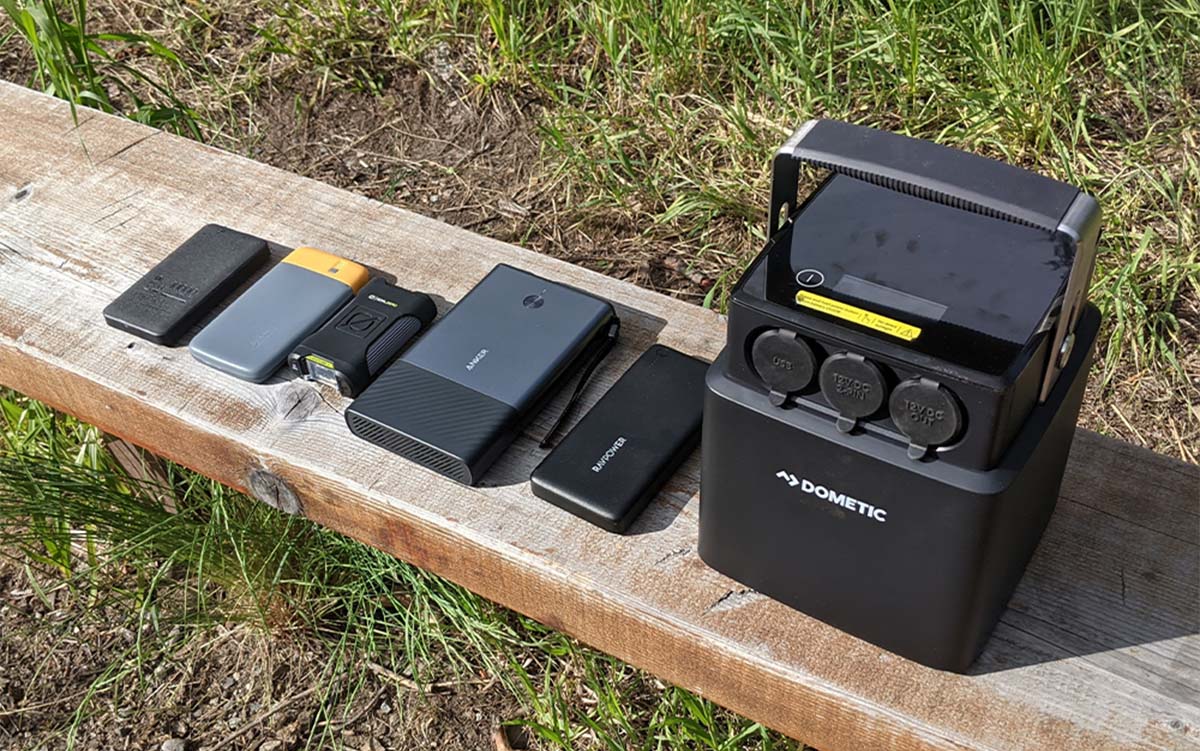Camping Battery Charger
When venturing into the great outdoors, a reliable power source is essential to keep your devices charged and ready for use. A camping battery charger is a vital accessory for any outdoor enthusiast, providing a convenient and efficient way to recharge your batteries on the go. Whether you're a casual camper or a seasoned adventurer, a high-quality camping battery charger can make all the difference in staying connected and powered up during your outdoor excursions. In this article, we'll explore the key features and benefits of camping battery chargers, helping you make an informed decision for your next outdoor adventure.
Efficient Camping with a Reliable Camping Battery Charger
When it comes to camping, having a reliable source of power is essential. A camping battery charger is a must-have device that ensures your batteries are always fully charged, providing you with the power you need to run your camping gear. In this article, we will explore the importance of a camping battery charger, its benefits, and key features to consider when selecting the right one for your camping needs.
Why You Need a Camping Battery Charger
A camping battery charger is a crucial device that allows you to charge your batteries while camping, ensuring that you have a steady supply of power. Without a charger, you risk running out of power, which can be a major inconvenience, especially when you're far from civilization. A camping battery charger provides you with the flexibility to charge your batteries at any time, giving you the freedom to enjoy your camping trip without worrying about power outages.
Types of Camping Battery Chargers
There are several types of camping battery chargers available, each with its unique features and benefits. Some of the most common types include:
Solar-powered chargers: These chargers use solar panels to charge your batteries, making them an eco-friendly and cost-effective option.
AC/DC chargers: These chargers can charge your batteries using either AC or DC power, providing you with more flexibility.
Portable chargers: These chargers are lightweight and compact, making them easy to carry around.
Key Features to Consider
When selecting a camping battery charger, there are several key features to consider. These include:
| Feature | Description |
| --- | --- |
| Capacity | The capacity of the charger, measured in amps or watts, determines how quickly it can charge your batteries. |
| Voltage | The voltage of the charger should match the voltage of your batteries to ensure safe and efficient charging. |
| Portability | A portable charger is ideal for camping, as it is lightweight and easy to carry around. |
| Durability | A durable charger can withstand the rigors of camping, including exposure to the elements. |
| Safety features | Look for a charger with built-in safety features, such as overcharge protection and short-circuit protection. |
Benefits of Using a Camping Battery Charger
Using a camping battery charger provides several benefits, including:
Convenience: A charger provides you with a convenient way to charge your batteries while camping.
Flexibility: A charger gives you the flexibility to charge your batteries at any time, ensuring that you have a steady supply of power.
Cost-effective: A charger is a cost-effective option, as it eliminates the need for disposable batteries.
Tips for Choosing the Right Camping Battery Charger
When selecting a camping battery charger, follow these tips:
Determine your power needs: Calculate your power needs to ensure that you select a charger with sufficient capacity.
Consider the type of camping: If you're car camping, a larger charger may be suitable, while a portable charger is ideal for backpacking.
Read reviews: Research the charger and read reviews from other campers to ensure that it is reliable and efficient.
How do you charge a battery while camping?

When camping, charging a battery can be a challenge, especially if you're in a remote area with no access to power outlets. However, there are several ways to charge a battery while camping, and the method you choose will depend on the type of battery you have, the equipment you're using, and the resources available to you.
Using Solar Panels
One popular method for charging batteries while camping is to use solar panels. Solar panels convert sunlight into electrical energy, which can be used to charge your battery. To use solar panels, you'll need a solar panel charger, a battery, and a regulator to control the flow of energy. Here are the steps to follow:
- Choose a location with direct sunlight for your solar panels.
- Connect the solar panel charger to your battery.
- Connect the regulator to the solar panel charger and battery.
- Monitor the charge level of your battery and adjust the regulator as needed.
Using a Portable Generator
Another option for charging batteries while camping is to use a portable generator. Portable generators are small, lightweight generators that can be used to power small appliances and charge batteries. To use a portable generator, you'll need a generator, a battery, and a charger. Here are the steps to follow:
- Choose a safe location for your generator, away from flammable materials.
- Connect the charger to your battery and generator.
- Turn on the generator and monitor the charge level of your battery.
- Turn off the generator when the battery is fully charged.
Using a Wind-Up Charger
Wind-up chargers are a great option for camping, especially if you're in a remote area with no access to sunlight or power outlets. Wind-up chargers use a hand-crank to generate electricity, which can be used to charge your battery. To use a wind-up charger, you'll need a wind-up charger and a battery. Here are the steps to follow:
- Turn the hand-crank to generate electricity.
- Connect the wind-up charger to your battery.
- Monitor the charge level of your battery and continue to turn the hand-crank until the battery is fully charged.
Using a Car Charger
If you're camping near your car, you can use a car charger to charge your battery. Car chargers use the 12V outlet in your car to charge your battery. To use a car charger, you'll need a car charger, a battery, and a car with a 12V outlet. Here are the steps to follow:
- Connect the car charger to your battery and car's 12V outlet.
- Turn on the car and monitor the charge level of your battery.
- Turn off the car when the battery is fully charged.
Using a Fuel Cell
Fuel cells are a newer technology that can be used to charge batteries while camping. Fuel cells use a chemical reaction to generate electricity, which can be used to charge your battery. To use a fuel cell, you'll need a fuel cell, a battery, and fuel. Here are the steps to follow:
- Connect the fuel cell to your battery.
- Insert the fuel into the fuel cell.
- Monitor the charge level of your battery and continue to add fuel as needed until the battery is fully charged.
What size power bank do I need for camping?

The size of the power bank you need for camping depends on several factors, including the type and number of devices you need to charge, the duration of your camping trip, and the availability of power sources. Here are some guidelines to help you choose the right power bank for your camping needs:
Calculating Your Power Needs
To determine the size of the power bank you need, you'll need to calculate your total power requirements. Consider the following:
Battery capacity: The capacity of your devices' batteries, measured in milliampere-hours (mAh).
Charge cycles: The number of times you need to charge your devices during your camping trip.
Power consumption: The power consumption of your devices, measured in watts (W).
For example, if you have a smartphone with a 3000mAh battery and you need to charge it twice a day, you'll need a power bank with a capacity of at least 6000mAh.
Types of Power Banks for Camping
There are several types of power banks suitable for camping, each with its own advantages and disadvantages:
Small power banks (5000-10000mAh): Ideal for charging small devices like smartphones and cameras.
Medium power banks (10000-20000mAh): Suitable for charging larger devices like laptops and tablets.
Large power banks (20000-50000mAh): Ideal for extended camping trips or for charging multiple devices at once.
Solar-powered power banks: Can be charged using solar panels, making them a great option for camping trips where power sources are limited.
Key Features to Consider
When choosing a power bank for camping, consider the following key features:
Capacity: Look for a power bank with a high capacity to ensure you can charge your devices multiple times.
Portability: Choose a power bank that is lightweight and compact to make it easy to carry.
Durability: Opt for a power bank with a rugged design and water-resistant construction to withstand the outdoors.
Multiple USB ports: Consider a power bank with multiple USB ports to charge multiple devices at once.
Solar charging: If you plan to camp in areas with limited power sources, look for a power bank with solar charging capabilities.
Power Bank Safety Precautions
When using a power bank for camping, it's essential to take safety precautions to avoid accidents:
Store properly: Store your power bank in a cool, dry place away from flammable materials.
Avoid overcharging: Avoid overcharging your power bank, as this can cause damage to the internal components.
Monitor temperature: Keep an eye on your power bank's temperature, as high temperatures can cause damage or even fires.
Use protective cases: Use protective cases or pouches to protect your power bank from damage.
Top Brands for Camping Power Banks
Here are some top brands for camping power banks:
- Anker
- Mophie
- Jackery
- EcoFlow
- RavPower
These brands offer a range of power banks with varying capacities, features, and prices to suit different camping needs.
Can you leave a battery charger on a battery overnight?

Yes, you can leave a battery charger on a battery overnight, but it's essential to ensure that the charger is designed for safe and efficient charging. Modern battery chargers, especially those with smart charging technology, are designed to prevent overcharging, which can cause damage to the battery. These chargers will automatically switch to a trickle charge or maintenance mode once the battery is fully charged, which helps to maintain the battery's health.
What Happens When You Leave a Battery Charger On Overnight?
When you leave a battery charger on overnight, the charger will continue to supply power to the battery even after it's fully charged. In most cases, this won't cause any harm, as the charger will automatically reduce the charging current to a trickle charge. However, if the charger is not designed for overnight charging, it can lead to overcharging, which can cause:
- Damage to the battery cells
- Reduced battery lifespan
- Increased risk of battery failure
Types of Battery Chargers That Are Safe for Overnight Charging
Not all battery chargers are created equal. When it comes to overnight charging, it's essential to use a charger that is designed for safe and efficient charging. Look for chargers with the following features:
- Smart charging technology that can detect when the battery is fully charged
- Trickle charge or maintenance mode to prevent overcharging
- Overcharge protection to prevent damage to the battery cells
Risks of Leaving a Battery Charger On Overnight
While modern battery chargers are designed to prevent overcharging, there are still some risks associated with leaving a battery charger on overnight. These include:
- Fire risk: Faulty chargers or damaged batteries can cause a fire, especially if they are not designed for overnight charging
- Battery damage: Overcharging can cause damage to the battery cells, reducing their lifespan and overall performance
- Increased energy consumption: Leaving a charger on overnight can increase energy consumption, which can lead to higher electricity bills
Best Practices for Overnight Battery Charging
To ensure safe and efficient overnight charging, follow these best practices:
- Use a charger that is designed for overnight charging and has smart charging technology
- Monitor the charging process to ensure that the charger is not overheating or malfunctioning
- Keep the charging area clean and well-ventilated to reduce the risk of fire
Conclusion... (No, I won't conclude!)
Are power banks good for camping?

Power banks can be a lifesaver when camping, especially if you're planning to venture into the wilderness with limited access to electricity. Here's why:
Convenience and Portability
Power banks are designed to be compact and lightweight, making them easy to carry on camping trips. They're perfect for charging your devices on the go, ensuring you stay connected with friends and family or capture those stunning outdoor moments. Look for power banks with a high capacity (measured in mAh) and a compact design to maximize convenience.
Multiple Device Charging
When camping, it's not uncommon to have multiple devices that need charging, such as smartphones, cameras, and portable speakers. A power bank with multiple USB ports can charge multiple devices simultaneously, saving you time and hassle. Some power banks even feature quick charging capabilities, which can rapidly top up your devices.
Weather Resistance
Camping often involves exposure to the elements, which can be harsh on your gear. Look for power banks with water-resistant and dust-proof designs to ensure they can withstand rough weather conditions. Some power banks even feature IP67 ratings, which means they can withstand being submerged in water for up to 30 minutes.
Solar Charging Capabilities
When camping, you may not always have access to a power outlet. Solar charging capabilities can be a game-changer in these situations. Some power banks come with built-in solar panels, allowing you to harness the sun's energy to recharge your devices. This feature is especially useful for extended camping trips or in areas with limited access to electricity.
Safety Features
When choosing a power bank for camping, safety should be a top priority. Look for power banks with built-in short-circuit protection, overcharge protection, and overheat protection to ensure safe and reliable charging. Some power banks even feature LED indicators that display the charging status and battery level, providing added peace of mind.
Frequently Asked Questions
What is a camping battery charger and how does it work?
A camping battery charger is a device specifically designed to recharge batteries while camping or in remote areas where access to electrical outlets is limited. These chargers use alternative energy sources such as solar power, wind power, or hand-cranking to generate electricity and recharge batteries. They are ideal for powering camping gear, lights, and other essential devices when venturing into the great outdoors. Camping battery chargers are typically portable, compact, and durable, making them an essential accessory for any outdoor enthusiast.
What are the benefits of using a camping battery charger?
Using a camping battery charger offers several benefits, including reliability, convenience, and sustainability. These chargers provide a reliable source of power, ensuring that your devices stay charged even in remote areas. They are also convenient, as they eliminate the need to search for electrical outlets or rely on disposable batteries. Additionally, camping battery chargers are an eco-friendly option, as they harness renewable energy sources, reducing your carbon footprint and promoting sustainable camping practices.
What types of batteries can be charged with a camping battery charger?
Camping battery chargers are designed to charge a variety of battery types, including deep cycle batteries, AGM batteries, and lithium-ion batteries. They can also charge batteries used in camping gear, such as flashlights, radios, and GPS devices. Some camping battery chargers may have specific settings for charging different battery types, so it's essential to choose a charger that is compatible with your battery needs.
How do I choose the right camping battery charger for my needs?
When choosing a camping battery charger, consider factors such as power output, portability, and durability. Determine the type and number of batteries you need to charge, as well as the devices you plan to power. Look for a charger with a sufficient power output to meet your needs. Portability is also crucial, as you'll want a charger that is lightweight and compact. Finally, consider the durability and weather resistance of the charger, as it will be exposed to outdoor elements. By considering these factors, you can choose a camping battery charger that meets your specific needs and enhances your outdoor experience.


